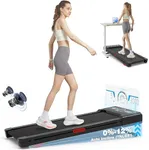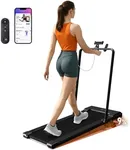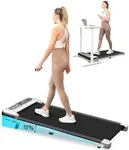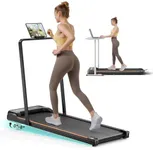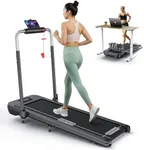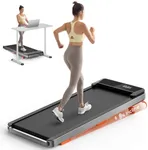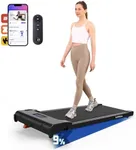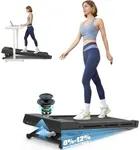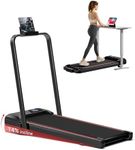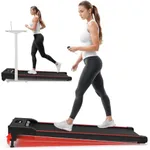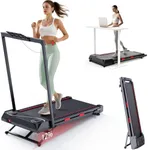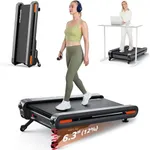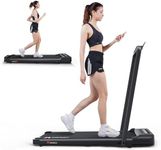Buying Guide for the Best Walking Pads With Incline
Walking pads with incline are a great way to stay active and fit, especially if you prefer exercising indoors. These devices are compact, easy to use, and can be adjusted to simulate walking on an incline, which can help you burn more calories and strengthen your muscles. When choosing a walking pad with incline, it's important to consider several key specifications to ensure you get the best fit for your needs. Here are the main specs to look out for and how to navigate them.Incline RangeThe incline range refers to the degree to which the walking pad can be tilted to simulate walking uphill. This is important because a higher incline can increase the intensity of your workout, helping you burn more calories and build muscle strength. Incline ranges can vary from a slight tilt to a steep angle. If you're a beginner or looking for a low-impact workout, a walking pad with a lower incline range (0-5%) might be sufficient. For more intense workouts, look for a higher incline range (up to 15% or more). Consider your fitness goals and current fitness level when choosing the incline range.
Speed RangeThe speed range indicates how fast the walking pad can go. This is important because it determines the intensity of your workout. Walking pads typically offer a range of speeds, from a slow walk to a brisk pace. If you plan to use the walking pad for light exercise or rehabilitation, a lower speed range (0.5-4 mph) might be adequate. For more vigorous exercise, look for a walking pad with a higher speed range (up to 6 mph or more). Think about your fitness level and how you plan to use the walking pad when considering the speed range.
Weight CapacityThe weight capacity is the maximum weight that the walking pad can safely support. This is important for ensuring the durability and safety of the device. Walking pads typically have weight capacities ranging from 200 to 300 pounds or more. Choose a walking pad with a weight capacity that comfortably exceeds your body weight to ensure stability and longevity. If multiple people will be using the walking pad, consider the weight of the heaviest user.
Foldability and StorageFoldability and storage refer to how easily the walking pad can be folded and stored away when not in use. This is important for saving space, especially if you have limited room in your home. Some walking pads are designed to be ultra-compact and can be folded flat to fit under a bed or in a closet. If space is a concern, look for a walking pad that is easy to fold and has a compact storage footprint. Consider where you will store the walking pad and how often you will need to move it.
Cushioning and Shock AbsorptionCushioning and shock absorption refer to the walking pad's ability to reduce the impact on your joints while walking. This is important for preventing injuries and providing a comfortable walking experience. Walking pads with good cushioning and shock absorption are especially beneficial for people with joint issues or those who plan to use the device frequently. Look for walking pads with features like multi-layer belts or specialized cushioning systems. Consider your joint health and comfort preferences when evaluating this spec.
Display and ControlsThe display and controls refer to the interface you use to operate the walking pad. This is important for tracking your workout progress and adjusting settings. Walking pads may come with basic displays showing speed, time, and distance, or more advanced consoles with additional features like heart rate monitoring and preset workout programs. If you prefer a simple, straightforward experience, a basic display might be sufficient. For more detailed tracking and customization, look for a walking pad with a more advanced console. Think about what information and features are important to you when choosing the display and controls.
Noise LevelThe noise level refers to how loud the walking pad is during operation. This is important if you plan to use the walking pad in a shared space or while watching TV or listening to music. Walking pads with quieter motors and better construction tend to produce less noise. If noise is a concern, look for walking pads that are specifically designed to operate quietly. Consider where and when you will be using the walking pad and how important noise level is to you.
